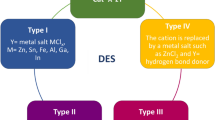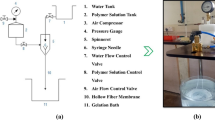Abstract
Polyethylene glycols have become more popular alternate reaction media due to interesting properties like non-toxicity, bio-degradability, and full miscibility with water and organic solvents. Binary mixtures of polyethylene glycols with common solvents can be useful to tune their physical and chemical properties and to facilitate chemical and physical processes. In this study, solvatochromic parameters were spectrophotometrically determined for binary solvent mixtures of poly(ethylene glycol)-400 (PEG-400) with methanol, 2-propanol, 1-butanol, dimethyl sulfoxide, N,N-Dimethylformamide, and dichloromethane under ambient conditions, over the whole range of mole fractions. The solvatochromic parameters showed different trends in protic and aprotic solvents mixed with PEG-400. Methanol/PEG-400 mixtures showed special properties in polarity and polarizability so that the mixtures are more dipolar/polarizable than their pure components. Positive or negative deviations from ideal behavior confirmed that the indicators were involved in a preferential solvation process in the solvent mixtures. These deviations from ideality can be attributed to strong solvent–solvent interactions in the binary mixtures.




Similar content being viewed by others
References
Kamlet, M.J., Doherty, R.M., Veith, G.D., Taft, R.W., Abraham, M.H.: Solubility properties in polymers and biological media. 7. An analysis of toxicant properties that influence inhibition of bioluminescence in photobacterium phosphoreum (the microtox test). Environ. Sci. Technol. 20, 690–695 (1986)
Huddleston, J.G., Willauer, H.D., Griffin, S.T., Rogers, R.D.: Aqueous polymeric solutions as environmentally benign liquid/liquid extraction media. Ind. Eng. Chem. Res. 38, 2523–2539 (1999)
Pan, I.-H., Chiu, H.-H., Lu, C.-H., Lee, L.-T., Li, Y.-K.: Aqueous two-phase extraction as an effective tool for isolation of geniposide from gardenia fruit. J. Chromatogr. A 977, 239–246 (2002)
Hahn, M.S., Taite, L.J., Moon, J.J., Rowland, M.C., Ruffino, K.A., West, J.L.: Photolithographic patterning of polyethylene glycol hydrogels. Biomaterials 27, 2519–2524 (2006)
Leach, J.B., Schmidt, C.E.: Characterization of protein release from photocrosslinkable hyaluronic acid–polyethylene glycol hydrogel tissue engineering scaffolds. Biomaterials 26, 125–135 (2005)
Zhang, G., Yang, Z., Lu, W., Zhang, R., Huang, Q., Tian, M., Li, L., Liang, D., Li, C.: Influence of anchoring ligands and particle size on the colloidal stability and in vivo biodistribution of polyethylene glycol-coated gold nanoparticles in tumor-xenografted mice. Biomaterials 30, 1928–1936 (2009)
Gref, R., Lück, M., Quellec, P., Marchand, M., Dellacherie, E., Harnisch, S., Blunk, T., Müller, R.H.: “Stealth” corona-core nanoparticles surface modified by polyethylene glycol (PEG): influences of the corona (PEG chain length and surface density) and of the core composition on phagocytic uptake and plasma protein adsorption. Colloids Surfaces B Biointerfaces 18, 301–313 (2000)
Hamzehzadeh, S., Majouy, A., Mokhtarani, B.: Effect of the ionic liquid 1-butyl-3-methylimidazolium bromide as an additive on the formation of polyethylene glycol + tri-potassium phosphate aqueous biphasic systems: the role of polymer molecular weight. J. Mol. Liq. 213, 235–246 (2016)
Hamzehzadeh, S., Abbasi, M.: The influence of 1-butyl-3-methyl-imidazolium bromide on the partitioning of l-tyrosine within the polyethylene glycol 600 + potassium citrate aqueous biphasic system at T = 298.15 K. J. Chem. Thermodyn. 80, 102–111 (2015)
Willauer, H.D., Huddleston, J.G., Rogers, R.D.: Solvent properties of aqueous biphasic systems composed of polyethylene glycol and salt characterized by the free energy of transfer of a methylene group between the phases and by a linear solvation energy relationship. Ind. Eng. Chem. Res. 41, 2591–2601 (2002)
Fischer, V., Borchard, W.: Thermodynamic properties of poly (ethylene glycol)/water systems. 2. Critical point data. J. Phys. Chem. B 104, 4463–4470 (2000)
Pereira, J.F., Kurnia, K.A., Freire, M.G., Coutinho, J.A., Rogers, R.D.: Controlling the formation of ionic-liquid-based aqueous biphasic systems by changing the hydrogen-bonding ability of polyethylene glycol end groups. ChemPhysChem 61, 2219–2225 (2015)
Zaslavsky, B.Y., Miheeva, L.M., Gulaeva, N.D., Borovskaya, A.A., Rubtsov, M.I., Lukatskaya, L.L., Mchedlov-Petrossyan, N.O.: Influence of non-ionic polymers on solvent properties of water as detected by studies of acid-base equilibria of sulphonephthalein and fluorescein dyes. J. Chem. Soc. Faraday Trans. 87, 931–938 (1991)
Kim, I., Jang, M.D., Ryu, Y.K., Cho, E.H., Lee, Y.K.: Dipolarity, hydrogen-bond basicity and hydrogen-bond acidity of aqueous poly (ethylene glycol) solutions. Anal. Sci. 18, 4–7 (2002)
Singh, P., Pandey, S.: Solute–solvent interactions within aqueous poly(ethylene glycol): solvatochromic probes for empirical determination and preferential solvation. Green Chem. 9, 254–261 (2007)
Sarkar, A., Trivedi, S., Pandey, S.: Unusual solvatochromism within 1-butyl-3-methylimidazolium hexafluorophosphate + poly(ethylene glycol) mixtures. J. Phys. Chem. B 112, 9042–9049 (2008)
Kohantorabi, M., Fakhraee, M., Salari, H., Gholami, M.R.: Probing solvent–solvent and solute–solvent interactions in surfactant binary mixtures: solvatochromic parameters, preferential solvation, and quantum theory of atoms in molecules analysis. RSC Adv. 6, 18515–18524 (2016)
Car, A., Stropnik, C., Yave, W., Peinemann, K.V.: PEG modified poly (amide-b-ethylene oxide) membranes for CO2 separation. J. Membrane Sci. 307, 88–95 (2008)
Ignatov, V.N., Buzlanova, M.M., Vasnev, V.A., Vinogradova, S.V., Chepik, S.D.: Methods of investigation molecular sieve drying of polyethylene glycols. Polym. Sci. USSR 29, 2709–2711 (1987)
Machado, V.G., Stock, R.I., Reichardt, C.: Pyridinium N-phenolate betaine dyes. Chem. Rev. 114, 10429–10475 (2014)
Herodes, K., Leito, I., Koppel, I., Rosés, M.: Solute–solvent and solvent–solvent interactions in binary solvent mixtures. Part 8. The E T(30) polarity of binary mixtures of formamides with hydroxylic solvents. J. Phys. Org. Chem. 12, 109–115 (1999)
García, B., Aparicio, S., Alcalde, R., Ruiz, R., Dávila, M.J., Leal, J.M.: Characterization of lactam-containing binary solvents by solvatochromic indicators. J. Phys. Chem. B 108, 3024–3029 (2004)
Salari, H., Khodadadi-Moghaddam, M., Harifi-Mood, A.R., Gholami, M.R.: Preferential solvation and behavior of solvatochromic indicators in mixtures of an ionic liquid with some molecular solvents. J. Phys. Chem. B 114, 9586–9593 (2010)
Ortega, J., Rafols, C., Bosch, E., Roses, M.: Solute–solvent and solvent–solvent interactions in binary solvent mixtures. Part 3. The E T(30) polarity of binary mixtures of hydroxylic solvents. J. Chem. Soc. Perkin Trans. 2(7), 1497–1503 (1996)
Roses, M., Rafols, C., Ortega, J., Bosch, E.: Solute–solvent and solvent–solvent interactions in binary solvent mixtures. Part 1. A comparison of several preferential solvation models for describing E T(30) polarity of bipolar hydrogen bond acceptor-cosolvent mixtures. J. Chem. Soc. Perkin Trans. 2(8), 1607–1615 (1995)
Author information
Authors and Affiliations
Corresponding author
Electronic supplementary material
Below is the link to the electronic supplementary material.
Rights and permissions
About this article
Cite this article
Harifi-Mood, A.R., Abbasi, M. Preferential Solvation and Solvatochromic Parameters in Mixtures of Poly(ethylene glycol)-400 with Some Molecular Organic Solvents. J Solution Chem 47, 1503–1513 (2018). https://doi.org/10.1007/s10953-018-0806-0
Received:
Accepted:
Published:
Issue Date:
DOI: https://doi.org/10.1007/s10953-018-0806-0




